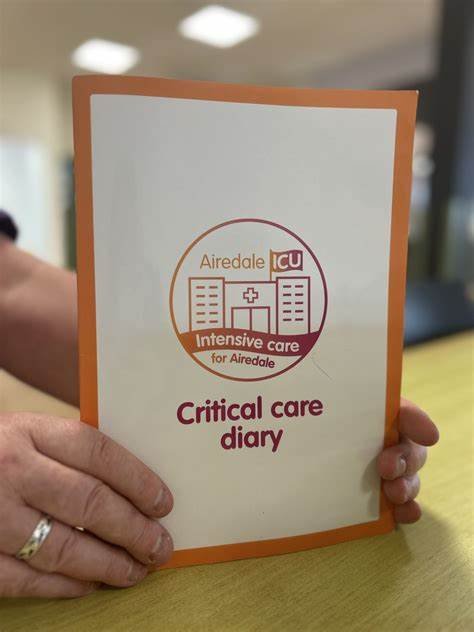Pain management is a crucial aspect of care for patients in the intensive care unit (ICU). Patients in the ICU often experience severe pain due to surgery, trauma, or serious illness. Effective pain management helps improve comfort, supports recovery, and reduces stress during an already challenging time. In this article, we will explore how to manage pain in intensive care, focusing on the methods and strategies that healthcare professionals use to ensure patients remain as comfortable as possible.

1. Assessing the Patient’s Pain
The first step in managing pain in the ICU is accurately assessing the patient’s pain level. ICU patients may have difficulty expressing their pain, especially if they are sedated, unconscious, or unable to speak due to tubes or machines. Healthcare providers rely on various methods to evaluate pain, including monitoring body language, facial expressions, and vital signs.
Methods of pain assessment include:
- Observing physical signs: Changes in heart rate, blood pressure, or respiratory rate can indicate pain or discomfort.
- Facial expressions: Nurses and doctors look for signs of discomfort such as grimacing or tension in the face.
- Pain scales: If the patient is alert, healthcare providers may use a pain scale, where the patient can rate their pain on a scale of 0 to 10.
Effective pain assessment helps ensure that pain is managed appropriately for each individual patient.
2. Administering Pain Medications
Medications are the most common way to manage pain in the ICU. Depending on the severity of the pain, doctors may use different types of pain relievers, from mild medications to strong opioids. The goal is to provide enough pain relief without causing harmful side effects.
Common pain medications in the ICU include:
- Non-opioid medications: Acetaminophen or ibuprofen can be used for mild to moderate pain.
- Opioids: Strong medications like morphine or fentanyl may be given for severe pain, such as after surgery or trauma.
- Sedatives: In some cases, sedative medications are used to help calm the patient and manage pain, especially if they are unable to communicate clearly.
Doctors and nurses adjust medication doses based on the patient’s needs, continuously monitoring for effectiveness and side effects.
3. Providing Localized Pain Relief
In some cases, localized pain relief can be more effective than general pain medications. This is particularly helpful for patients who have undergone surgery or have specific injuries. Localized pain relief includes options such as nerve blocks or epidural anesthesia, which target pain in a specific area of the body.
Examples of localized pain relief include:
- Epidural analgesia: A catheter placed near the spinal cord delivers pain medication to a specific region of the body, such as after abdominal or back surgery.
- Nerve blocks: Injections of local anesthetics around specific nerves can block pain in certain areas, like the legs or arms.
Localized pain relief can be a valuable tool in managing pain after surgery or injury, reducing the need for systemic medications.
4. Using Non-Pharmacological Pain Management
In addition to medications, there are several non-pharmacological methods that can be used to help manage pain in ICU patients. These techniques focus on helping the patient relax and reduce stress, which can in turn help alleviate pain. Non-pharmacological methods are often used alongside medications to provide holistic pain relief.
Examples of non-pharmacological pain management include:
- Relaxation techniques: Techniques such as deep breathing exercises, guided imagery, or listening to calming music can help reduce anxiety and pain perception.
- Massage therapy: Light touch or gentle massage may help relieve muscle tension and reduce pain.
- Positioning: Proper body positioning can reduce pressure on painful areas, such as after surgery or injury, making the patient more comfortable.
These approaches help create a calming environment and can enhance the effects of medical treatments.
5. Managing Breakthrough Pain
Even with regular pain management, patients in the ICU may experience “breakthrough pain,” which occurs when pain becomes more intense despite regular medication. Healthcare providers work quickly to address breakthrough pain and provide additional relief.
Managing breakthrough pain involves:
- Quick-acting pain medications: Fast-acting opioid medications can be given to provide quick relief from sudden increases in pain.
- Adjusting treatment plans: Doctors may review the current pain management plan and adjust medications or therapies to prevent future episodes of breakthrough pain.
Prompt management of breakthrough pain is crucial to keeping patients comfortable and improving their overall recovery experience.
6. Monitoring for Side Effects
When managing pain in ICU patients, it is essential to monitor for potential side effects of pain medications. Some medications, especially opioids, can cause unwanted side effects such as nausea, constipation, or respiratory depression (slowed breathing). Nurses and doctors continuously monitor the patient’s vital signs and overall condition to ensure they are responding well to treatment.
Common side effects to watch for include:
- Nausea or vomiting: Pain medications, particularly opioids, can cause digestive issues.
- Constipation: Opioids often slow down the digestive system, leading to constipation.
- Respiratory depression: High doses of opioids can slow the patient’s breathing, which requires careful monitoring.
If side effects occur, healthcare providers adjust medications or take steps to address these issues while still managing the patient’s pain.
7. Involving the Family
Family members can play an important role in managing pain for ICU patients, especially in terms of providing emotional comfort. While family cannot directly manage the patient’s physical pain, their presence can help reduce anxiety and provide reassurance, which in turn can reduce the perception of pain.
Ways family members help manage pain:
- Providing emotional support: Reassuring the patient that they are not alone and offering comfort.
- Advocating for the patient: If the patient cannot communicate their needs clearly, family members can help ensure that their pain relief needs are addressed.
- Encouraging relaxation: Family members can help patients practice relaxation techniques, such as breathing exercises or listening to soothing music.
Having family present can help create a positive, supportive environment that contributes to the patient’s comfort and pain management.
Conclusion
In conclusion, managing pain in intensive care is essential to ensuring that patients remain comfortable during their recovery. How to manage pain in intensive care involves a combination of effective medication, localized pain relief, non-pharmacological therapies, and continuous monitoring. By addressing both physical and emotional aspects of pain, healthcare providers can help ICU patients recover more comfortably. The collaboration between medical staff, patients, and family members is key to providing comprehensive pain management and improving the overall experience in the ICU.











